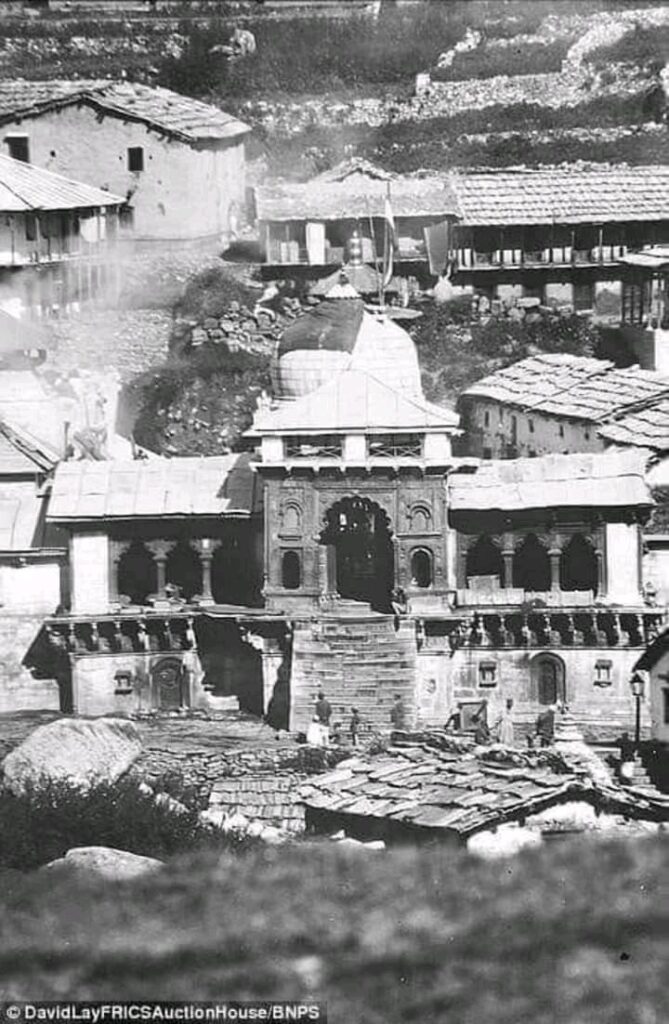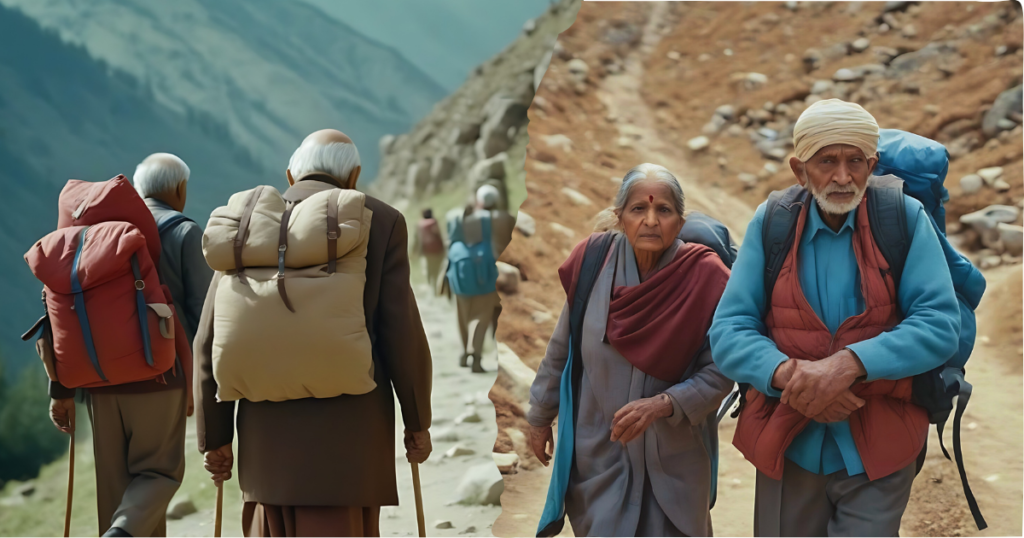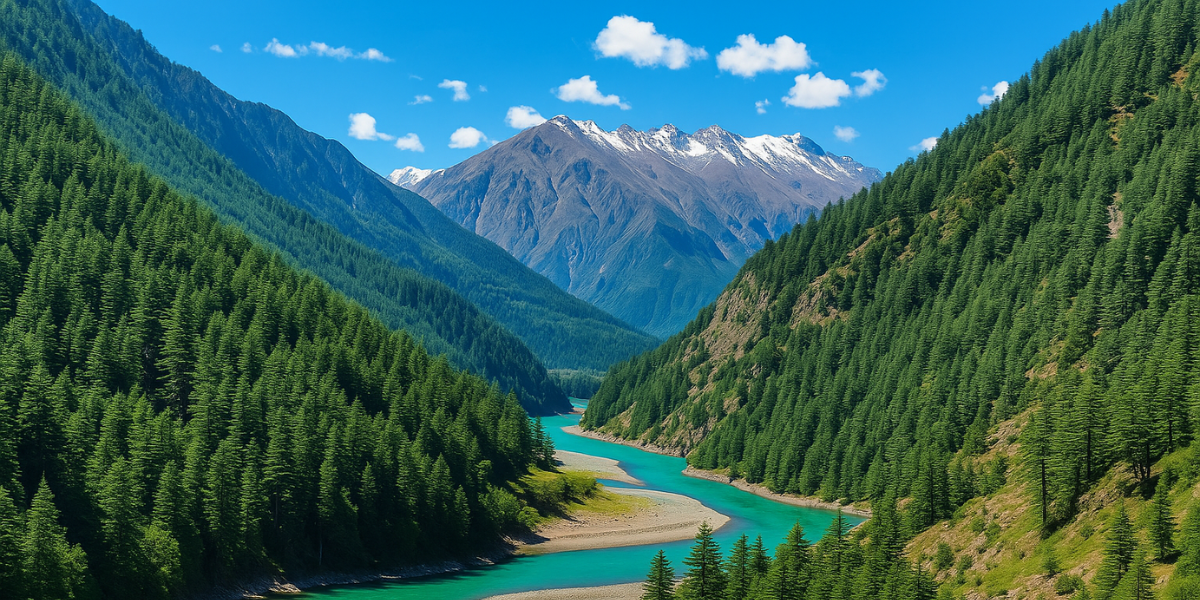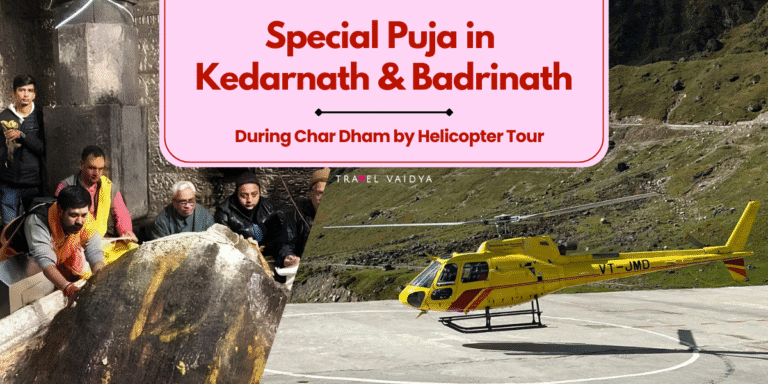Discover the significance of Char Dham Yatra, a spiritual journey to Yamunotri, Gangotri, Kedarnath, and Badrinath. Unveil the historical, mythological, and cultural importance of these sacred sites in Hinduism. Learn about the gods worshiped, fascinating legends, and the divine blessings associated with this revered pilgrimage. Perfect for Indian tourists seeking insights into its spiritual essence and the timeless traditions of India’s Himalayan temples
Table of Contents
Plan Your Spiritual Yatra With Us !
Get Customised Private Tours by Experts from Travel Vaidya

Historical Importance of Char Dham Yatra
The Char Dham Yatra owes its prominence to the 8th-century philosopher and spiritual leader Adi Shankaracharya. He established these four shrines as essential pilgrimage destinations to unite the Hindu faith. According to historical accounts, Shankaracharya believed that visiting these sacred sites could cleanse one’s sins and lead to moksha (salvation). The yatra has continued to thrive for over 1,200 years, becoming a major spiritual practice for Hindus worldwide.
The Four Holy Shrines
1. Yamunotri: Source of River Yamuna
Yamunotri, the westernmost shrine, is dedicated to Goddess Yamuna, considered the sister of Yama (the God of Death). Pilgrims visit the Yamuna’s source to seek blessings for longevity and protection from premature death. The hot springs at Janki Chatti are a highlight, where devotees cook rice to offer as prasad (sacred offering).
2. Gangotri: Origin of River Ganga
Gangotri is dedicated to Goddess Ganga, the holiest river in India. It is believed that King Bhagirath meditated here to bring Ganga down from heaven to cleanse the sins of humanity. The river’s crystal-clear waters and serene surroundings offer a deeply spiritual experience to visitors.
3. Kedarnath: Sacred Abode of Lord Shiva
Kedarnath Temple, dedicated to Lord Shiva, is the highest among the 12 jyotirlingas (lingams of light). According to legend, the Pandavas sought Lord Shiva’s forgiveness for killing their kin in the Mahabharata. The temple’s stone architecture and its stunning backdrop of snow-clad peaks make it an awe-inspiring destination.
4. Badrinath: Abode of Lord Vishnu
Badrinath, dedicated to Lord Vishnu, lies along the banks of the Alaknanda River. Mythology suggests that Lord Vishnu meditated here under a badri (Indian jujube) tree. The iconic image of the deity, seated in a meditative pose, inspires peace and devotion among pilgrims.
Read Related Blogs
Top Places to Visit During Char Dham Yatra »
Char Dham Yatra Route Map: Best Road Journey Guide »
Char Dham Yatra Significance: Why It’s a Must-Visit »
Top 6 Travel Tips for a Smooth Char Dham Yatra »
Monsoon Packing Guide for Char Dham Yatra »
Summer Packing Checklist for Char Dham Yatra »
What to Pack for Char Dham Yatra: Essentials Guide »
Char Dham Yatra Budget: How Much Does It Cost? »
Mythological Values Associated with Char Dham
Each shrine holds captivating legends that add to its divine aura:
- Yamunotri: Mythology states that bathing in the Yamuna’s waters can free one from the torments of death.
- Gangotri: Ganga’s descent from heaven was believed to be so powerful that Lord Shiva trapped it in his locks to protect the earth.
- Kedarnath: The temple’s structure is said to have been built by the Pandavas, symbolizing penance and redemption.
- Badrinath: The tale of Lord Vishnu’s tapasya (austerity) here signifies the triumph of virtue over materialism.
Spiritual and Cultural Significance of Char Dham Yatra
The Char Dham Yatra is more than just a religious journey; it’s an opportunity to embrace India’s spiritual and cultural heritage. Pilgrims believe that completing this yatra opens the doors to liberation and grants divine blessings. The trek through challenging terrains and breathtaking landscapes is a journey of self-discovery and faith.
Gods Worshipped at Each Shrine
- Yamunotri: Goddess Yamuna
- Gangotri: Goddess Ganga
- Kedarnath: Lord Shiva
- Badrinath: Lord Vishnu

Facts and Figures
- The Char Dham Yatra attracts over 3 lakh pilgrims annually.
- The Yamunotri Temple was built in the 19th century by Maharaja Pratap Shah of Tehri Garhwal.
- Kedarnath is situated at an altitude of 3,583 meters, making it one of the highest jyotirlingas.
- Gangotri Glacier is the second-largest glacier in India, stretching over 30 km.
- The Badrinath Temple dates back to the 9th century, believed to have been established by Adi Shankaracharya.
Modern-Day Relevance
Today, the Char Dham Yatra remains an essential spiritual endeavor for Indian families. It’s also gaining traction among international tourists seeking cultural immersion. Government initiatives like improved roads, better accommodations, and helicopter services have made the journey more accessible than ever before.
Tips for Pilgrims
- Best Time to Visit: May to June and September to October.
- What to Pack: Warm clothing, sturdy footwear, rain gear, medicines, and identity proof.
- Health Precautions: Acclimatize to high altitudes, stay hydrated, and avoid strenuous activities.
About Travel Vaidya – Trusted Travel Experts of Uttarakhand
Travel Vaidya is a Dehradun-based travel company with deep roots across Uttarakhand. For over 9 years, we’ve helped families, senior citizens, and spiritual travelers explore places like Char Dham, Auli, Jim Corbett, Nainital, Kausani, Almora, and Ranikhet with confidence.
We’re not a call center or big-brand OTA—we’re a small team that builds practical, experience-based itineraries. Every plan is shaped by local knowledge, seasonal awareness, and what actually works on-ground.
From temple visits to hotel check-ins, we handle logistics, route planning, and day-wise support—especially for elders and family travelers. We share what we know from living here, not from reading about it.
This guide is part of our effort to make travel in Uttarakhand easier to understand and plan.

Read Related Blogs
Essential Packing Tips for Senior Citizens on Char Dham Yatra »
Char Dham Yatra by Road: Everything You Need to Know Before You Go »
The Ancient Roots of Char Dham Yatra: A Journey Through History »
Char Dham Yatra in Monsoon: Risks, Precautions & Travel Tips »
Char Dham Yatra in Summer: Best Time to Visit & Travel Tips »
How to Book Char Dham Yatra Online: A Step-by-Step Guide »
Char Dham Yatra Peak Season: Best Time, Crowds & Smart Travel Tips »
Char Dham Yatra Road Conditions: What to Expect & Travel Tips »
Emergency Services on Char Dham Yatra Route: Hospitals, Helplines & Safety Tips »






